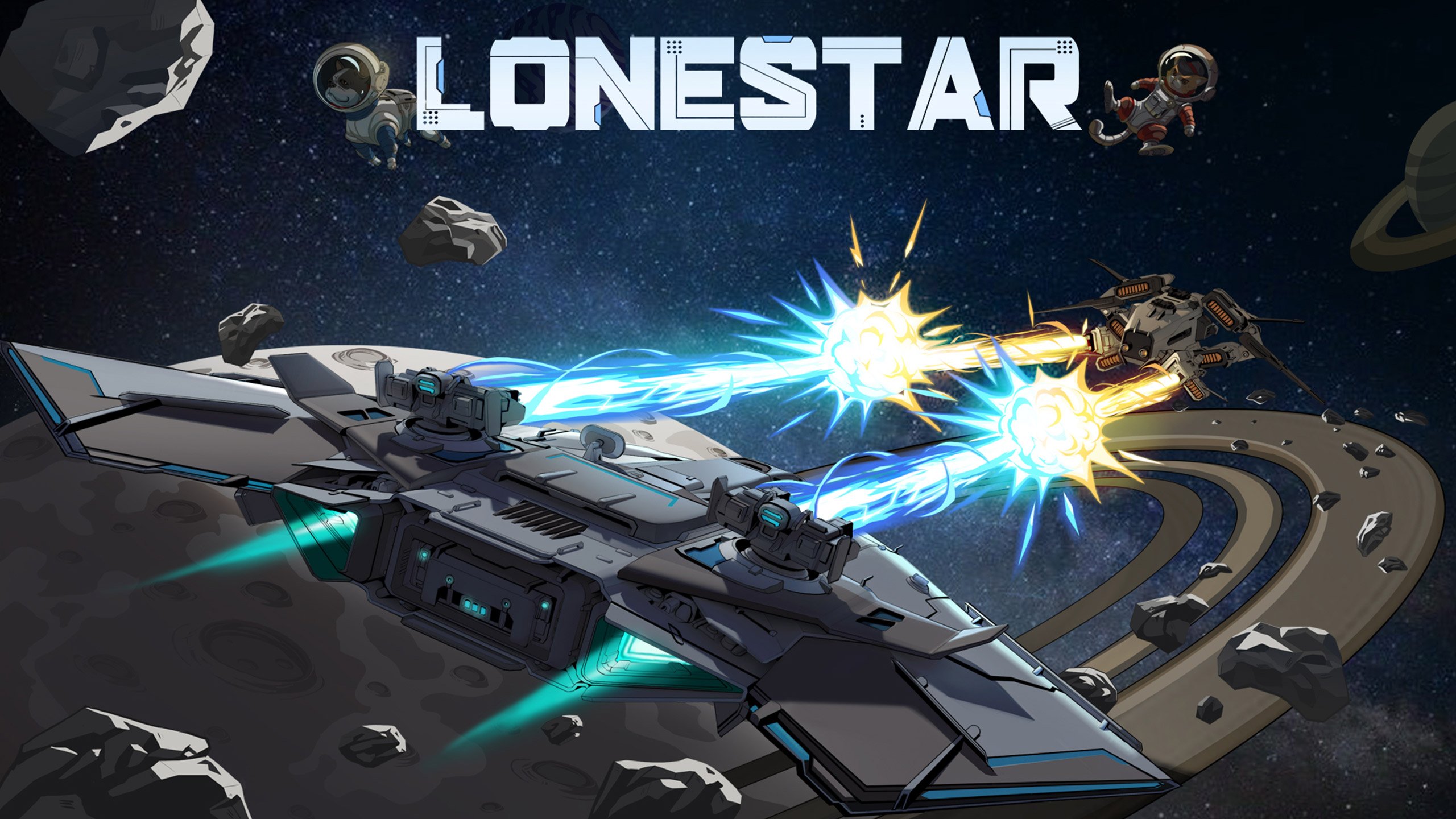LONESTAR is like a turn-based FTL: Faster Than Light crossed with a hefty dose of math. But hey, what else would you expect from a developer team named Math Tide? Don’t let the word ‘math’ scare you away, though. This is the best kind of math. The kind where the game does all the calculations for you. So, let’s jump in and see if this one is worth checking out or if it’s a hard pass.
In this review, I will be going over the following topics.
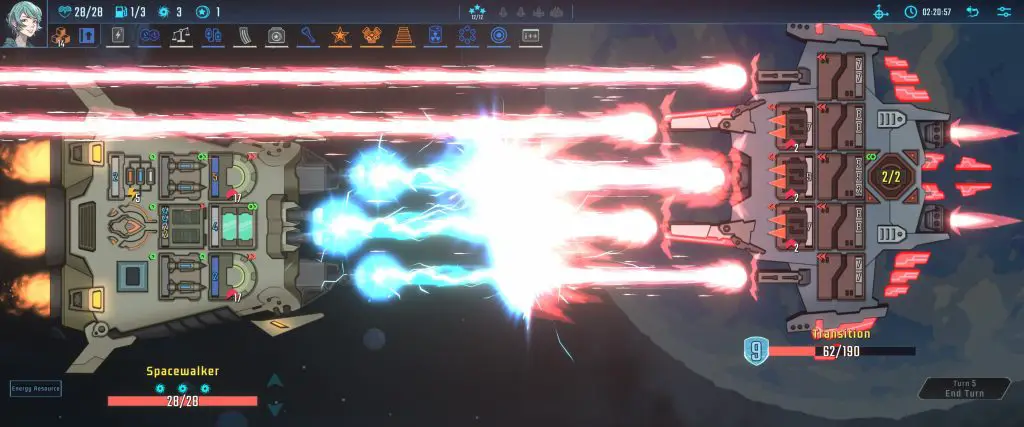
Story
The Bounty Hunter Association is hiring new recruits. When you sign up, you will get a free ship of your choice along with a pilot for your ship. They also offer a generous vacation package. On top of all that, you are able to keep any modules and treasures that you accumulate along the way. They just ask that you capture 12 wanted criminals, including three very high-level ones.
Gameplay
After joining the Bounty Hunter Association, you are sent out to collect on a series of bounties. Each criminal that you come up against will have a unique ship with an even more unique set of weapons on their ship. It is up to you to figure out how to defeat each of them to claim the bounty and move up the ranks as a bounty hunter.
Ships
Before starting your journey, you must pick a ship. There is only one ship available to you when you first get started. Two more ships will unlock later on for a total of three playable ships. Each one has its own unique ability. There is also a designated set of modules per ship that you will discover during your playthroughs.
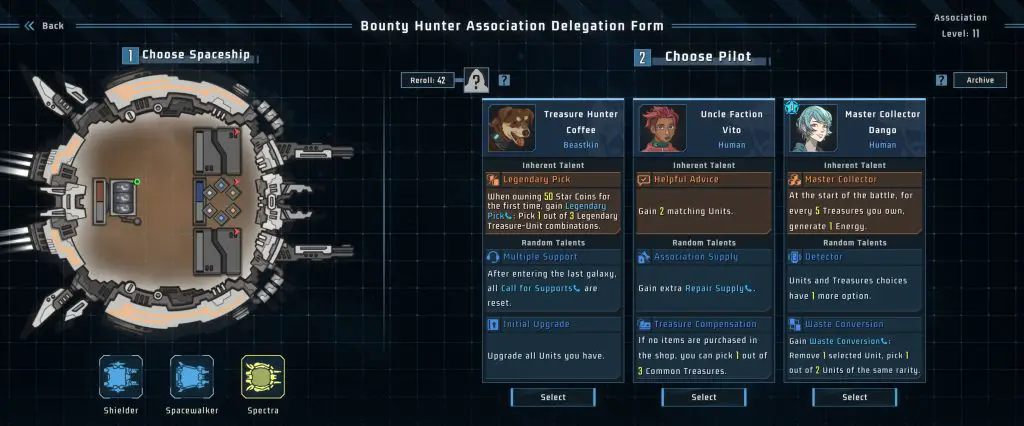
Pilots
There are many different pilots that will unlock as you play. The pilots are on rotation and only three will be available to pick from at the start of each game. Each pilot has an inherent talent specific to them as well as two randomly assigned talents from the pool of unlocked talents.
The collection of possible pilots and random talents can get quite big as you progress through the game. When in the pilot selection screen, there is also the option to reroll the three pilots for a chance to get one that you are looking to play as. Once you have selected a ship and a pilot, you are ready to embark.
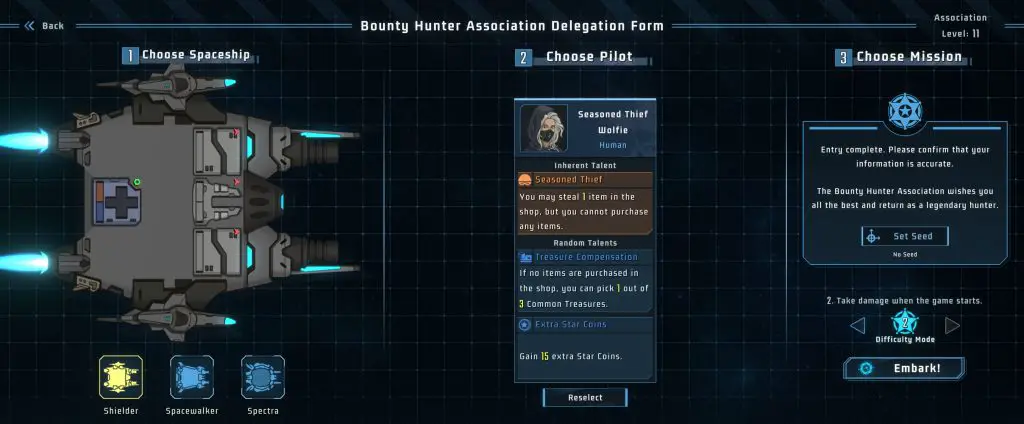
Modules
Each ship starts with a select set of modules. Modules work similarly to cards in a standard deck builder. You will be collecting modules during your run and even upgrading some of them. The biggest difference between modules in LONESTAR and cards in other deckbuilders is the limit that you can use at one time.
In LONESTAR, your ship has a weight limit. The weight limit tells you how many modules you can have equipped at any given time. Some higher-level modules might even cost two weights. This means you have to decide if it is worth having that one module in place of two different modules.
There are two different types of modules. There are attack modules and support modules. The attack modules will shoot at the enemy from the location they are on the ship. The support modules are for boosting your attack modules or manipulating your energy resources. You will need to be able to strategically use both types of modules in order to defeat the other ships.
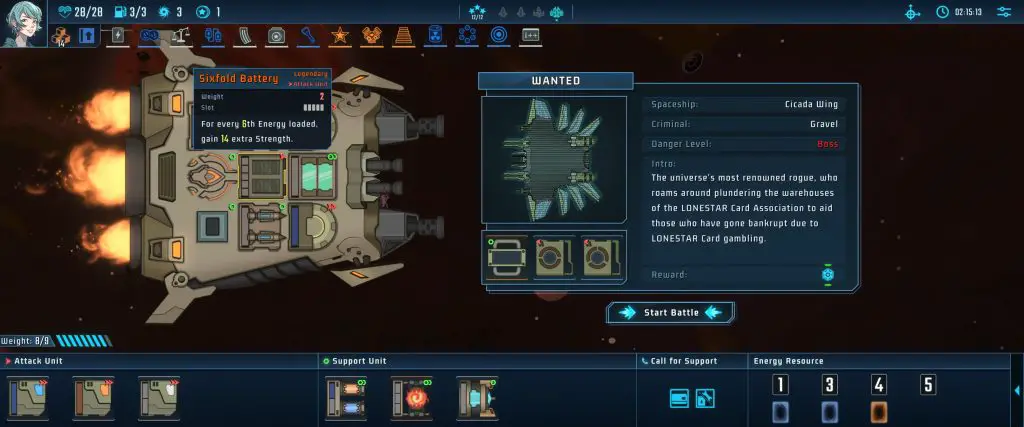
Energy
In order to activate most of your modules, you are going to need energy. Energy in LONESTAR is composed of two different types. There is the point energy resource, which can range from one to nine. Then there is the color resource, which is either white, blue, or orange. Orange is the highest ranking color, and white is the lowest.
Each turn, your ship will generate three energy points randomly from the pool of points and color resources available. Similar to other deckbuilding games, you will use up all of the resources available before the energy resource restocks. For example, you won’t be able to keep drawing that orange energy over and over if you have a large pool of other color energy resources.
Each turn, you will use the energy available to you to activate the modules on your ship. Each module will have slots of different colors. Higher-ranking colors can be used in lower-ranking slots, but not the other way around. So, a white energy can only be used in a white slot on a module, but an orange energy can be used in any orange, blue, or white slot on a module.
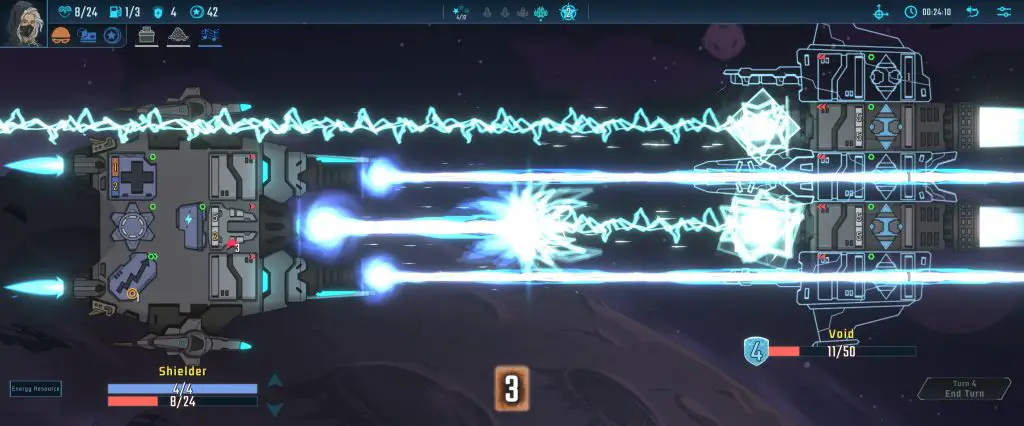
Combat
Combat can be quite challenging and tactical. Yours and your opponent’s ships each have a set amount of health points. If that reaches zero, then the ship is destroyed. The way to prevent your ship from taking damage is by negating or overpowering the opposing ship’s attacks. In the middle of the battlefield, you will see three sets of numbers.
On the left is your attack power per lane, and on the right is the opponent’s attack power per lane. In the middle is the difference between your attack power and their attack power. So if your attack has 10 power and the other ship has 20 power, then your ship will take 10 damage at the end of the turn in that lane. This calculation happens across all of the active attack lanes.
The most direct way to overpower the opponent’s attacks is by loading the biggest amount of energy into your attack modules that you can. You will probably have to boost your energy with support modules to even get close to some of your opponent’s attacks. When that is not enough, you can always use some fuel to shift your ship up or down one space to try to avoid one of the lanes of attack. You will get one fuel back at the end of every battle, so don’t be afraid to use it.

If everything goes wrong and you are just not able to beat the ship, then you can click the reset button in the top right corner to go back in time before the battle starts to try it again. Maybe you will have better luck the second time around. This time, you might want to keep track of the enemy’s durability. This is a number in a blue shield next to their health bar. The opposing ship will lose one durability for each of your attacks that hits them.
If you are able to get their durability down to zero, then their ship is paralyzed for a turn. That means you get a free turn to unleash hell on them before they come back online to do the same to you.
Vacation
After each successful battle in LONESTAR, the Bounty Hunter Association allows you to take a brief vacation. You will have a set number of days to do some traveling while you are on vacation. It is the opportune time to visit the shops, look for treasure, or even explore the unknown. Each event is random, so even if you know you are visiting a treasure event, you don’t know what kind of treasure you might find there.
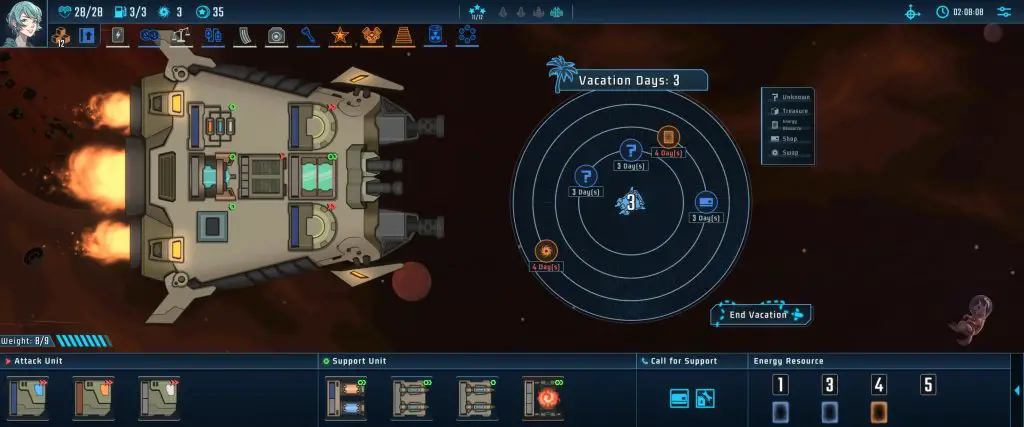
Some events take fewer days than others to complete. This means that if you are creative, you might be able to visit more than one location before your vacation is over. Once you have used up all of your vacation days, it is back to hunting down that next bounty on your list.
Legendary Bounty Hunter
You will become a legendary bounty hunter after successfully taking down 12 criminals. This includes three bosses. At the end of the run, you will be able to see your statistics for that run as well as level up your profile to unlock additional pilots and character talents to play with.
On top of that, if you think your ship is truly legendary, then you can start a boss battle run. Meaning you will only be fighting the bosses in the game. There are also no rewards, so you will only be using what is already equipped on your ship when you end the last run. Good luck.
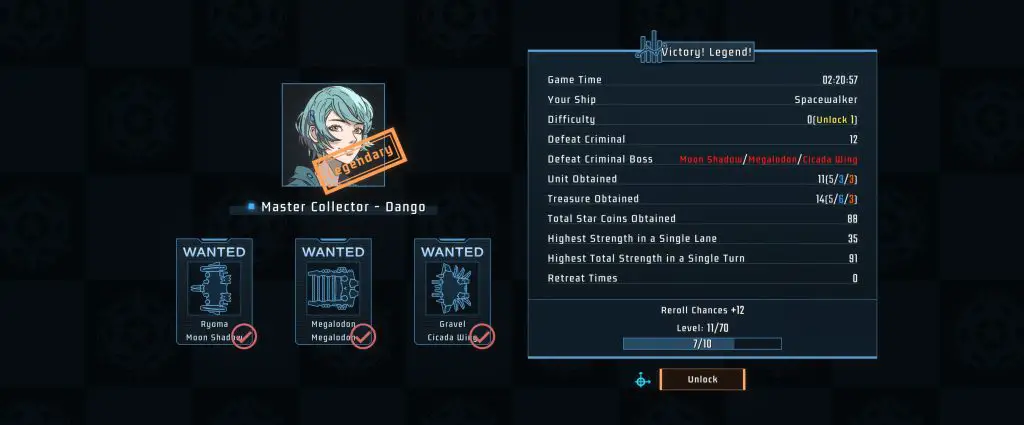
Conclusion
LONESTAR is a small but fantastic indie game. The runs are brief, and some of the options, like ships, are limited. That doesn’t mean there isn’t a lot of content, though. It will take you quite a few playthroughs to discover every module and unlock every pilot in the game.
I would say what LONESTAR misses in size, it makes up for in quality. By that, I mean quality of life features. I mentioned at the beginning that this is a turn-based game with a heavy dose of math. Well, the developers did everything they could to make the math easy to calculate and follow. Every treasure or module that you hover over will highlight the other modules that it affects.
When you hover an energy resource over a module, it will automatically update the power in that lane, so you can tell if that is the right place to put it before locking it in. You never feel like you are making an uninformed decision. This makes the game more enjoyable because then you can focus more on interesting chains and combos rather than hoping your calculations are correct.
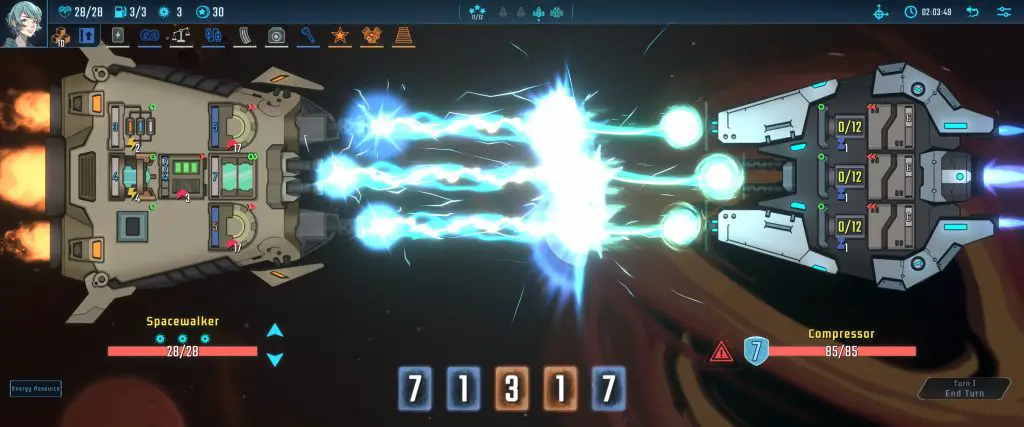
LONESTAR is a game that a lot of people are really going to enjoy. Especially if they are looking for something quick and lightweight to play, it even plays great on the Steam Deck. If you are interested in checking this one out, then go take a look at their Steam page.
A review code was provided by the developers at Math Tide.

